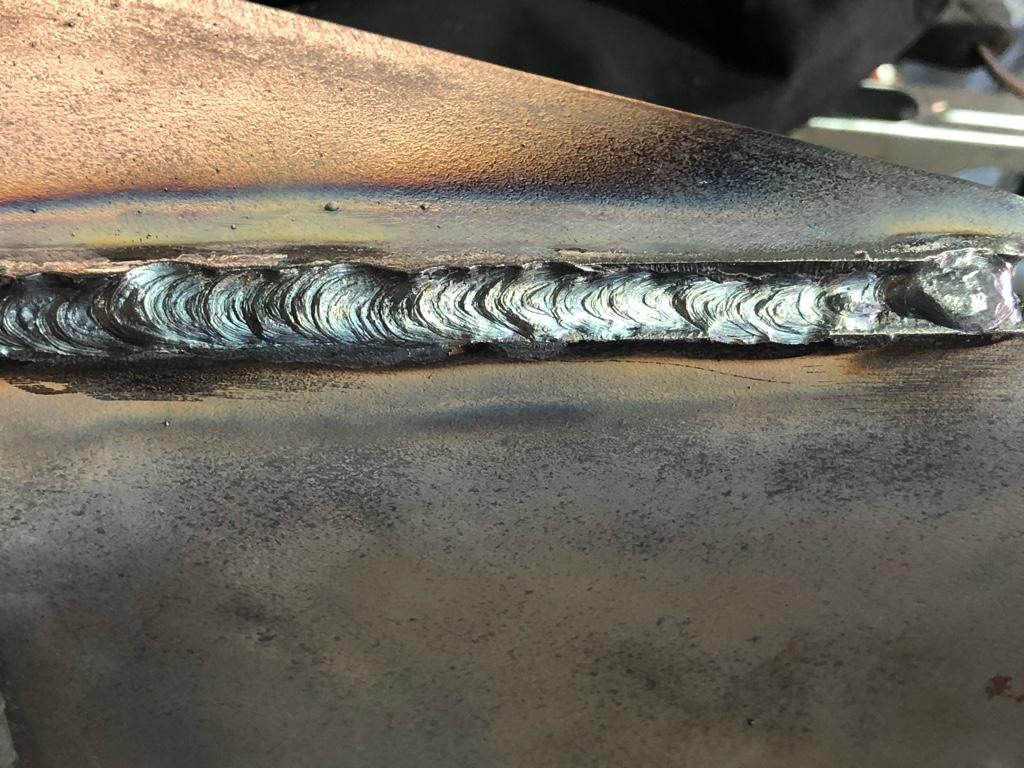Understanding the Causes and Solutions for Undercut Welding in Metal Fabrication Processes
In the realm of metal fabrication processes, the occurrence of undercut welding poses a significant challenge that demands a comprehensive understanding of its reasons and feasible options. The complex interplay of different elements during welding operations can lead to this unwanted sensation, influencing the architectural stability and total top quality of the welded joints - Preventing weld undercut. By exploring the root causes of undercut welding and discovering reliable restorative steps, fabricators can boost the criterion of their craftsmanship and guarantee the production of remarkable steel elements
Common Sources Of Undercut Welding
Often neglected in steel manufacture, undercut welding happens due to numerous elements that demand careful interest and knowledge to be efficiently mitigated. One typical reason for undercut welding is too much warm input. When the heat input is too expensive, it can result in the melting and succeeding erosion of the base product along the edges of the weld joint, developing a groove or undercut. Furthermore, inappropriate welding methods, such as making use of the wrong welding angle or take a trip speed, can additionally contribute to damage formation. Poor shielding gas insurance coverage is another crucial element that can cause undercutting. Inadequate gas coverage stops working to shield the weld pool appropriately, resulting in oxidation and undercut issues. The option of welding criteria, such as voltage, current, and cable feed rate, plays a significant role in the incident of undercut welding. Recognizing these common causes is important for applying safety nets and making certain top quality welds in metal manufacture procedures.
Influence of Incorrect Welding Parameters
Unreliable welding criteria can considerably endanger the honesty and top quality of welded joints in metal manufacture procedures. The impact of incorrect welding specifications shows up in numerous ways, leading to structural weaknesses and flaws in the bonded parts. Meticulous attention to welding specifications is vital to make certain the manufacturing of top quality welds with the preferred mechanical residential properties and architectural honesty.
Result of Improper Lantern Angle
Improper torch angle in welding operations can significantly impact the quality and integrity of the final weld joints in metal fabrication processes. The torch angle plays an important function in figuring out the warmth input and circulation throughout welding. When the torch angle is inaccurate, issues such as undercutting can arise. Damaging is an usual welding issue where a groove creates along the weld toe, deteriorating the joint and jeopardizing its structural integrity.
A lantern angle that is as well steep can lead to not enough infiltration, incomplete fusion, and raised spatter. On the various other hand, a torch angle that is too superficial can lead to excessive infiltration, burn-through, and distortion of the base product. Preventing weld undercut. Proper lantern angle is crucial for making sure consistent weld quality, toughness, and appearance
To avoid damaging and other issues brought on by improper lantern angles, welders need to be trained to preserve my company the appropriate lantern angle throughout the welding process. Normal tracking and adjustment of lantern angles during welding can assist achieve audio welds with minimal issues.
Role of Inadequate Welding Strategies

An additional facet of poor welding strategies is incorrect weld prep work. Insufficient cleaning of the base metals, incorrect joint layout, or not enough side preparation can all add to undercut welding. Poor securing gas protection or making use of the incorrect kind of gas can result in incomplete blend and the development of undercut flaws.
To attend to the function of poor welding strategies in metal construction processes, it is important to provide thorough training for welders. Appropriate education on welding criteria, joint preparation, and shielding gas option can assist prevent undercut welding and make certain top notch welds in metal manufacture jobs.
Effective Solutions for Undercut Welding
Resolving undercut welding in metal manufacture needs implementing efficient solutions to improve weld quality and architectural integrity. Among the primary options to combat undercut is to readjust welding parameters such as voltage, present, and travel speed to make certain appropriate warmth input Go Here and fusion. By fine-tuning these setups, welders can prevent too much melting of the base metal and filler material, lowering the possibility next of undercut development.
Additionally, appropriate joint prep work is essential in stopping undercut. Ensuring clean base steel surface areas devoid of pollutants and making use of the suitable bevel angle can assist advertise much better weld penetration and minimize the threat of undercut - Preventing weld undercut. Employing appropriate welding methods, such as oscillating the torch or weaving, can also help in dispersing warmth evenly and filling the weld joint effectively, decreasing the possibility of undercut defects
Additionally, choosing the proper welding consumables, consisting of electrodes and filler steels, is important in reducing undercut. Utilizing products with proper chemical make-ups and mechanical properties can add to achieving sound welds with minimal undercut. Routine inspection and quality control steps ought to likewise be executed to discover and attend to undercut problems quickly, guaranteeing the general stability of fabricated metal parts.

Verdict
To conclude, recognizing the reasons and services for undercut welding in metal fabrication procedures is critical for attaining top notch welds. By attending to typical causes such as wrong welding criteria, incorrect torch angle, and poor welding strategies, welders can stop undercutting and ensure solid, resilient welds. It is important to take notice of these variables and carry out efficient solutions to boost the general welding procedure and end product top quality.

Comments on “Best Overview to Preventing Weld Undercut: Tips and Techniques”